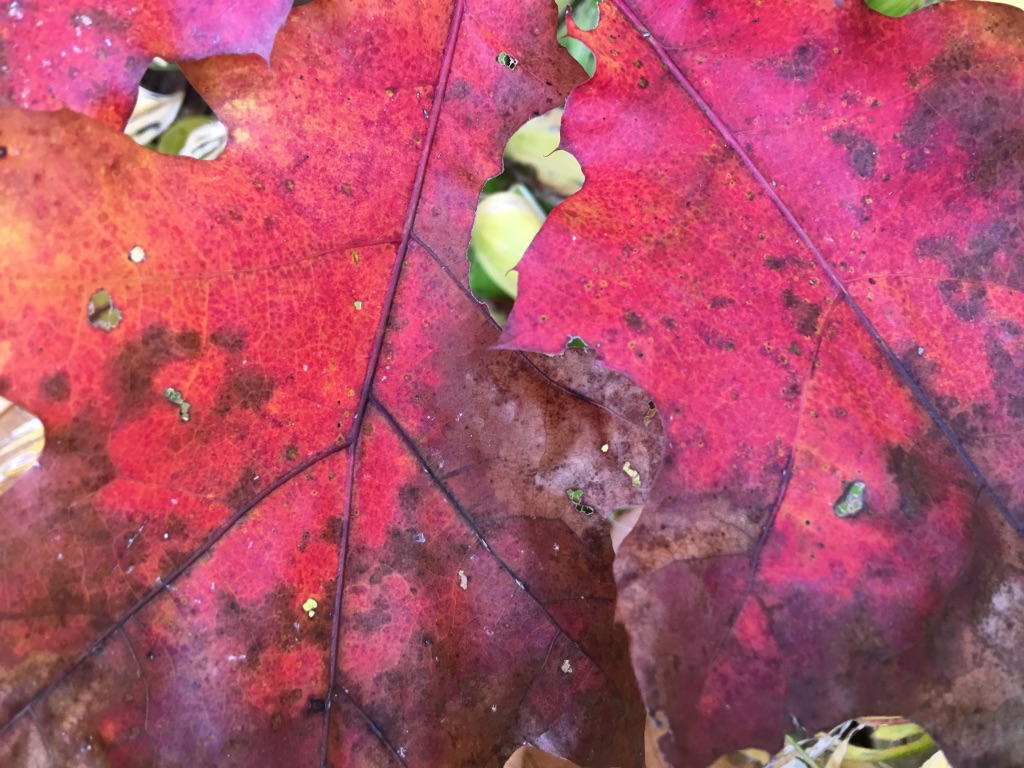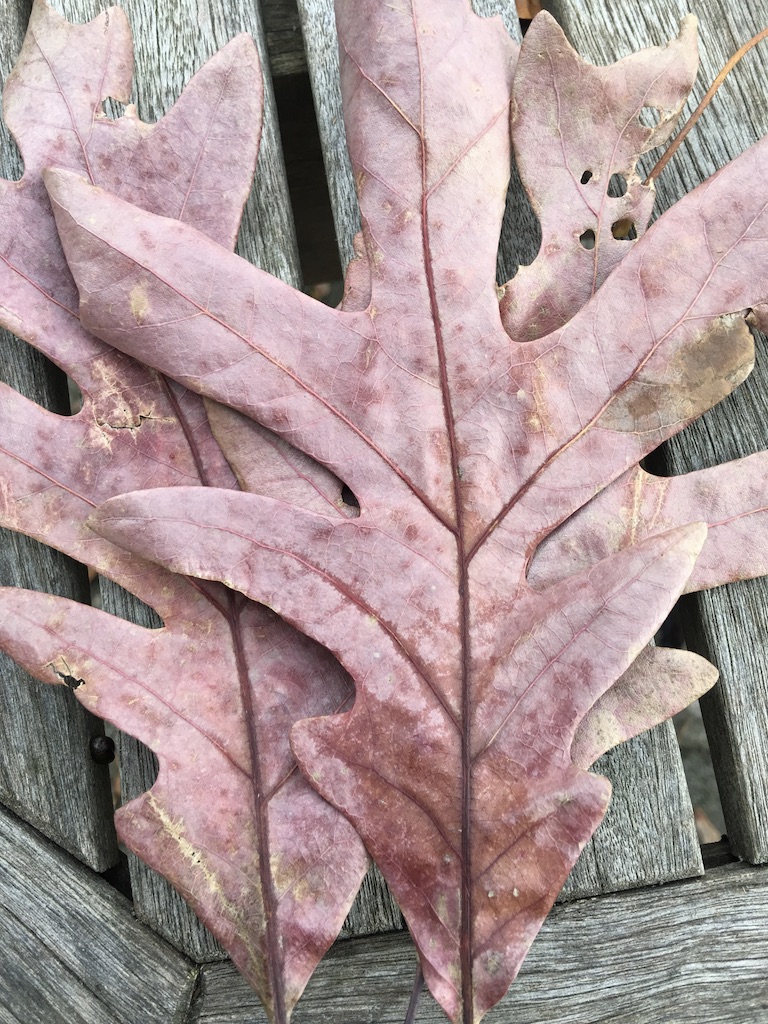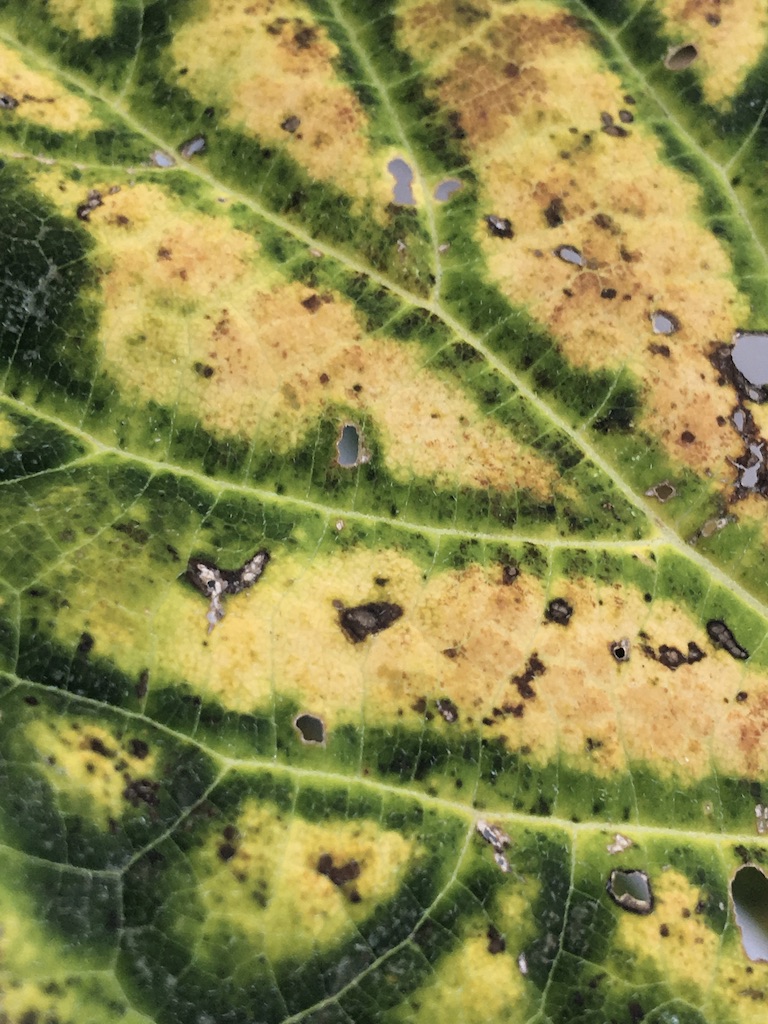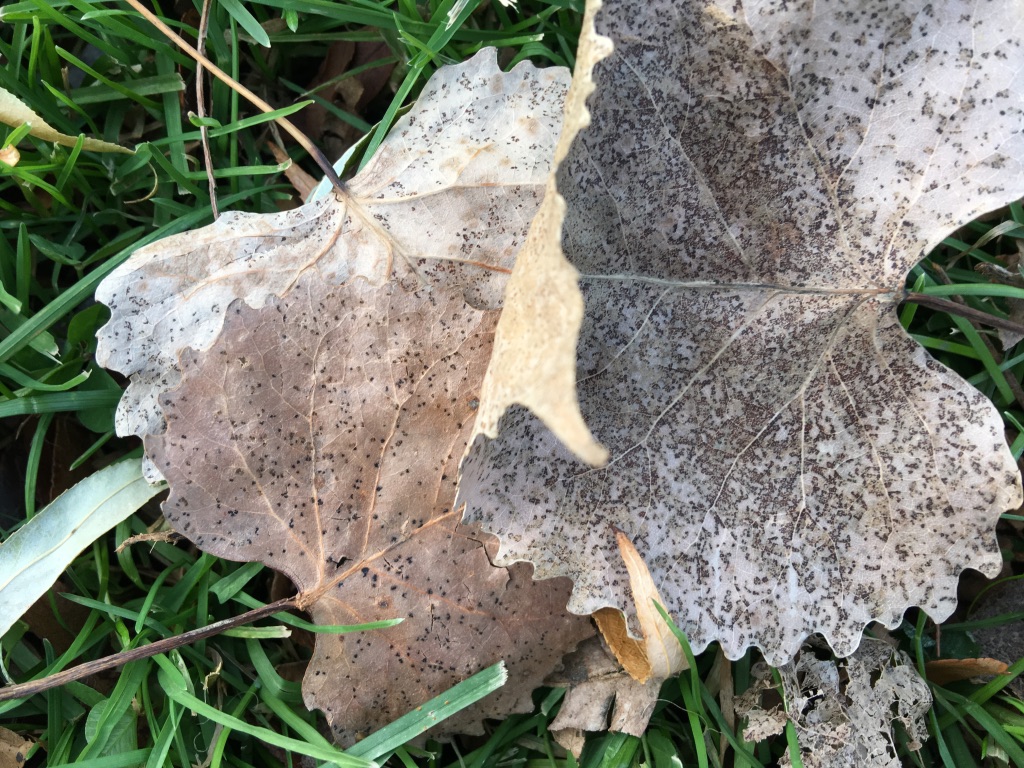
Ever since Robert Macfarlane posted feuille-morte as his online Word of the Day, I have been looking closely at dead, or at least dying, leaves. My sister died at the end of the summer after a difficult illness, so mortality has been on my mind. I cannot write about her, but I can write about fallen leaves. The entry was:
“feuille-morte”—“the colour of withered leaves in autumn (John Locke); lit “dead-leaf”. Scumbled ochre-brown & russet, fox-red and mustard. ‘Feuille” is at the root of “foliage”’ at the root in turn of feuille is *bhel-, Proto-Indo European, to thrive or bloom.
Twitter (September 14, 2019)
I encountered “feuille-morte” as a color word a few years ago while researching auriculas (see Primrose published by Reaktion Press, 2019). Patricia Cleveland-Peck in her book Auriculas Through the Ages: Bear’s Ears, Ricklers and Painted Ladies compiled a list of color words that Sir Thomas Hanmer (1612–78) used to describe his many auriculas in The Garden Book, which he wrote c.1653, but wasn’t published until 1933. He used “feuille-morte” to describe auricula flowers. I imagine a peachy brown or a beige mustard. Auriculas abound in earthy floral colors.

“Scumbled” was new to me: I found that it is used to describe the appearance of a painting on which the artist has overlain a coat of opaque paint over a colored canvas to achieve muted, softer tones. The noun form is scumbling, and Titian is said to have innovated the technique. I can see why “scumbled” goes well with “feuille-morte.”

Looking at fallen leaves can be an adventure into observing both the beauty and mortal effects of predation, disease, and the wear-and-tear of life. It is not easy to be a leaf. Some “eaten” leaves, those termed “skeletonized,” are quite beautiful. Insect larvae mine their way through the inside of the leaf leaving trails. When the tissues invaded by those trails die, only the veins, which are made of cells with walls (animal cells have no walls), are left.

Then there are the waves of color that show the shifting physiological status inside the leaf. As death comes, transformations occur that render the leaf entirely new to our sight, and not unbeautiful, perhaps even suggestive of a surreal life to come.

There are infinitesimal shadings even in a pile of “brown” leaves that one might walk by without a thought—is a given leaf brown, or beige, or oatmeal, or greyish tannish, or greyish gold?
Then there is spotting—so delicate, like the pin holes in a lace pricking. There are an amazing array of organisms that feed on leaves–all the little bugs, including those that suck, those that chew, and those that lay eggs, and then the fungi that make many modifications in the substance and appearance of a leaf (e.g., maple tar spot disease).

Each leaf takes a different path in its fall to the ground and eventual demise. It has been hard for me to walk by fallen leaves without observing new patterns and without thinking about the infinite variety of life, so much of which seems to vanish too quickly. Coming home from the coffee shop where I was working on this blog on a wintry, gusty evening I saw groups of leaves swirling and chasing each other across the road in front of my car. Their animation felt joyful. When they are gone, swept away by leaf blowers or packed away in bags, we will feel their absence.

Though I am smitten by the aesthetics of feuille-morte and scumbled russet, I know that they are “workers”–their sole purpose to carry on photosynthesis, taking in carbon dioxide and releasing oxygen. Steven Vogel in The Life of a Leaf writes that “It’s a remarkably multifaceted endeavor, this business of doing a leaf’s business in a physical world, even if directed at a single end” (p.4). Vogel, currently James B. Duke Professor Emeritus in biology at Duke University, sees parallels between their problems and our own as physical beings:
A list of the physical factors that bear on the leaf’s life gets dauntingly formidable: density of plant material, water, and air; viscosity of water and air; mechanical properties such as strength, extensibility, the elastic moduli, and others; thermal capacity, conductivity, and expansion coefficient; surface tension; wind speed; diffusion coefficient; osmotic and hydrostatic pressures–and some others. Every one of these factors bears on your life as well as on that of a leaf–some perhaps less, but most at least as strongly.
Steven Vogel, The Life of a Leaf, p. 4.
Physics was not my forte in school, because it involved so many forces I couldn’t see except through classroom demonstrations, but I understand his point here–and it expands my understanding of how much physical beings endure to survive. That the structures that have evolved to withstand these forces are so beautiful is a matter of mystery and wonder.
French poet Paul Verlaine wrote a poem c. 1866 called “Chanson d’automne,” a salute to the feuille morte. It was used in secret messaging from the Special Operations Executive to the French Resistance in World War II. Natalia Ginzburg simply calls the poem “Les Feuilles Mortes” in her memoir/novel Family Lexicon (p. 38 in the NYRB edition). She writes that her uncle Silvio set the poem to music. Most versions of “Les Feuilles Mortes” are French. There is one sung by Yves Montand (music by Joseph Kosma and words by Jacques Prevert), and one sung by Edith Piaf. They are more explicit about love and loss than the original.
The last verse of Verlaine’s original poem (see the original French here) reads this way:
And I go
Where the winds know,
Broken and brief,
To and fro,
As the winds blow
A dead leaf.

